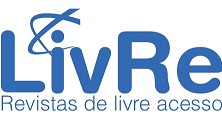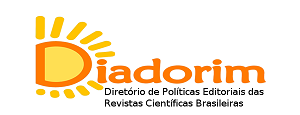LITERARY-GEOGRAPHICAL SAYINGS
AGROECOLOGY IN CHRONICLES
DOI:
https://doi.org/10.70860/rtg.v13i29.16956Keywords:
Geography, literature, writingAbstract
The discomfort that led us to the production of this article emerged from the bureaucratized character of most scientific texts, a legacy of a discursive tradition that, by claiming neutrality, compromised authorship. If, in Agroecology, he approximation between scientific knowledge and vernacular knowledge is requested, we see as important the oxygenation of academic writing in the direction of a "defossilization" of the text. From three chronicles about the agroecological movement, we illustrate the collective effort made by the research group "Space, Subject and Existence" (CNPQ), that for more than a decade has been searching the latent possibilities on the border between Geography and Literature, inviting to new literary-geographical sayings. We converge with Freire's presupposition (1987) that we must cultivate and disseminate words full of the world, words that call for new geographies-in-life-form (MARANDOLA JR, 2018). The chronicles shared here are addressed to diverse spaces and situations: classrooms, occupations and rural settlements, training courses, sarais, bars. We hope that readers, instead of collecting for themselves the words we offer here, will taste them slowly and sow them in other backyards.
References
ADORNO, Theodor. Indústria Cultural e Sociedade. Tradução por Juba Elisabeth Levy. 5ª edição. São Paulo: Editora Paz e Terra, 2002.
ALVES, Rubem. Educação dos sentidos e mais... Verus Editora, 2011.
BOSI, Alfredo. O ser e tempo da poesia. 8ª edição. São Paulo: Companhia das Letras, 2010.
CHAVEIRO, Eguimar. A implacável fragilidade do quadrado. Coluna Opnião – Multiplicadores de Visat (blog). Disponível em: www.multiplicadoresdevisat.com. Acesso em: set. de 2021.
CHAVEIRO, Eguimar Felício. Dizibilidades literárias: a dramaticidade da existência nos espaços contemporâneos. Geograficidade, v. 5, n. 1, p. 40-51, 2015. Disponível em: https://dialnet.unirioja.es/. Acesso em: março 2023.
DUNKER, Christian. Paixão da ignorância: a escuta entre Psicanálise e Educação – Coleção Educação e Psicanálise. – São Paulo: Editora Contracorrente, 2020.
FERNANDES, Florestan. O significado do protesto negro. São Paulo: Cortez, São Paulo: 1989.
FREIRE, Paulo. Pedagogia do Oprimido. – 64 ed. – Rio de Janeiro/São Paulo: Paz e Terra, 2017.
GONÇALVES, Ricardo J. de A. Fernandes. Interpretações geográficas em Moçambique /África e experiências dialógicas na terra de boa gente (Inhambane). Revista Pegada. Presidente/SP, vol. 19, nº 2, pp. 410 - 437, 2018.
HOOKS, bell. Teoria Feminista: da margem ao centro. – São Paulo: Perspectiva, 2019.
KROPOTKIN, Piotr. Socialismo. Intermezzo/ Biblioteca Terra Libre, 2021.
MARANDOLA JR, Eduardo. Olhar encarnado, geografias em formas-de-vida. GeoTextos, v. 14, n. 2, 2018. Disponível em: https://periodicos.ufba.br/index.php/g eotextos/article/view/28599.
MOREIRA, Ruy. O que é Geografia. Brasiliense, 2017.
MOREIRA, Ruy. Pensar e ser em Geografia. São Paulo: Contexto, 2007.
SPECIAN, Valdir; CHAVEIRO, Eguimar F. Resistência Socioambiental: outra dimensão da atividade camponesa. Caminhos de Geografia, Uberlândia, Edição Especial: I CIGEO-DR, pp. 89 – 104, 2020. Disponível em: <http://www.seer.ufu.br/index.php/caminhosdegeografia>. Acesso em: 26 set. 2021.
SANATAELLA, Lucia; NÖTH, Winfried. Imagem: cognição, semiótica, mídia. 9ª reimpressão. São Paulo: Iluminunras, 2015.
Downloads
Published
How to Cite
Issue
Section
License
Copyright (c) 2024 Tocantinense Journal of Geography

This work is licensed under a Creative Commons Attribution-NonCommercial-NoDerivatives 4.0 International License.
Revista Tocantinense de Geografia does not remunerate any author for the publication of their texts. The contents of the texts published in this journal are the responsibility of the authors.








.png)












